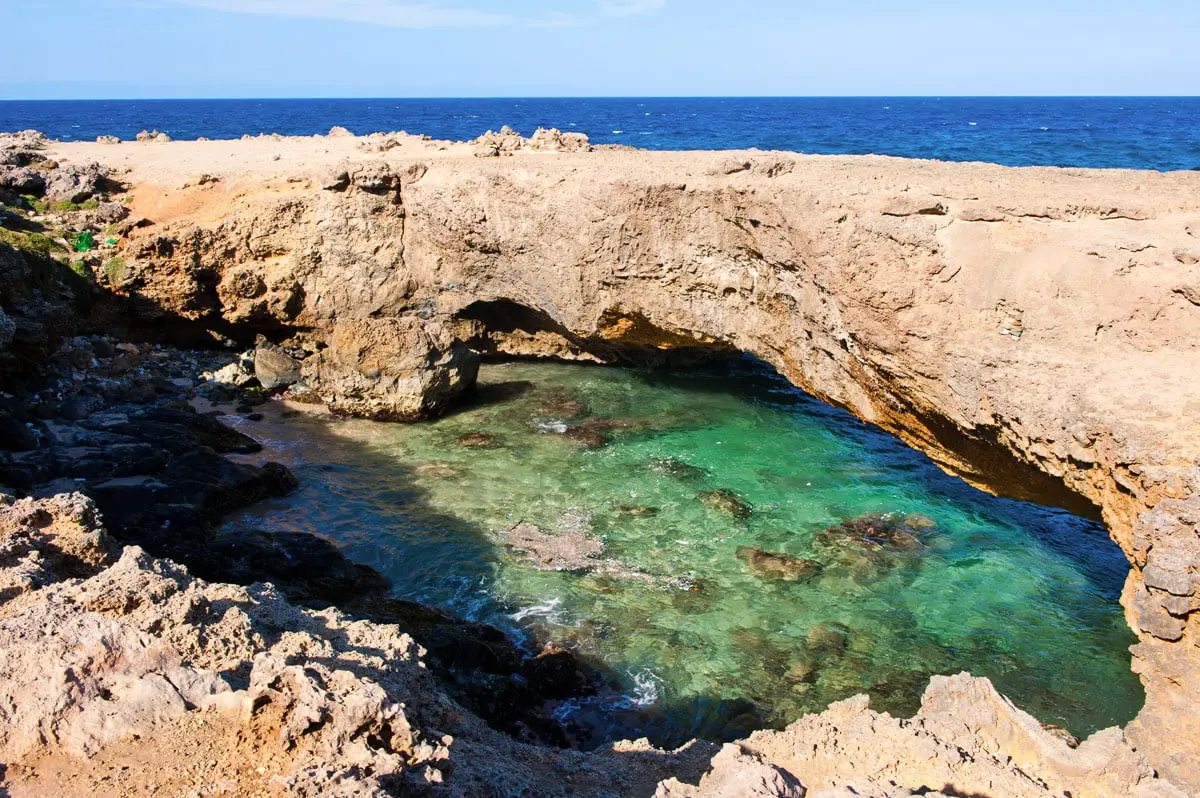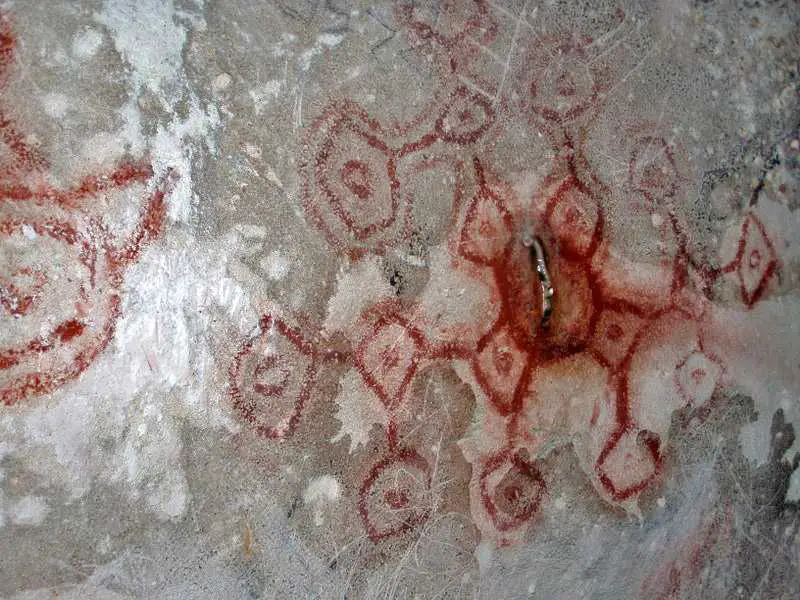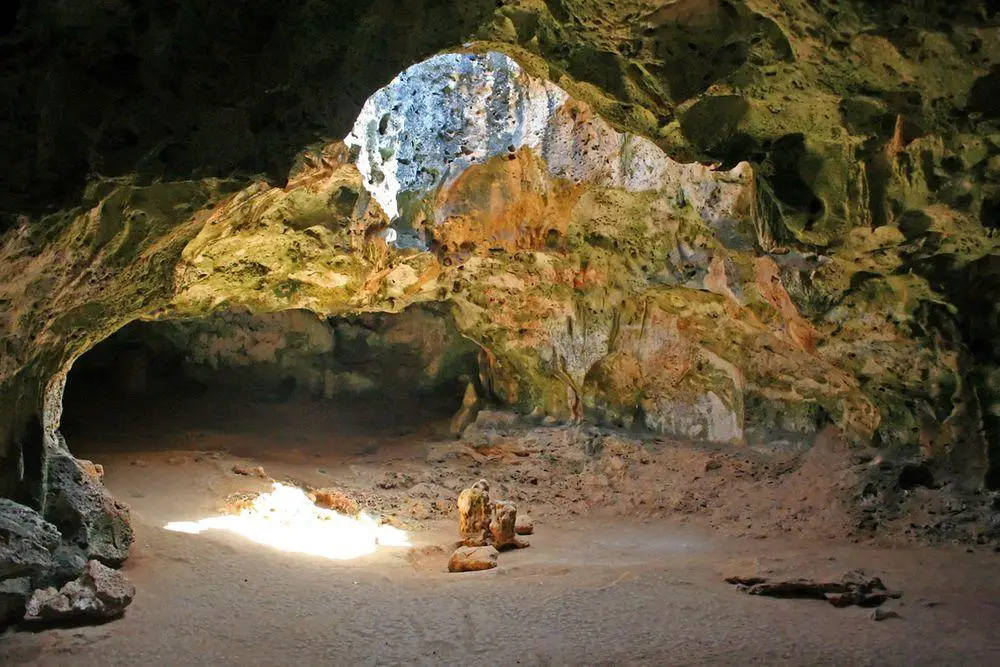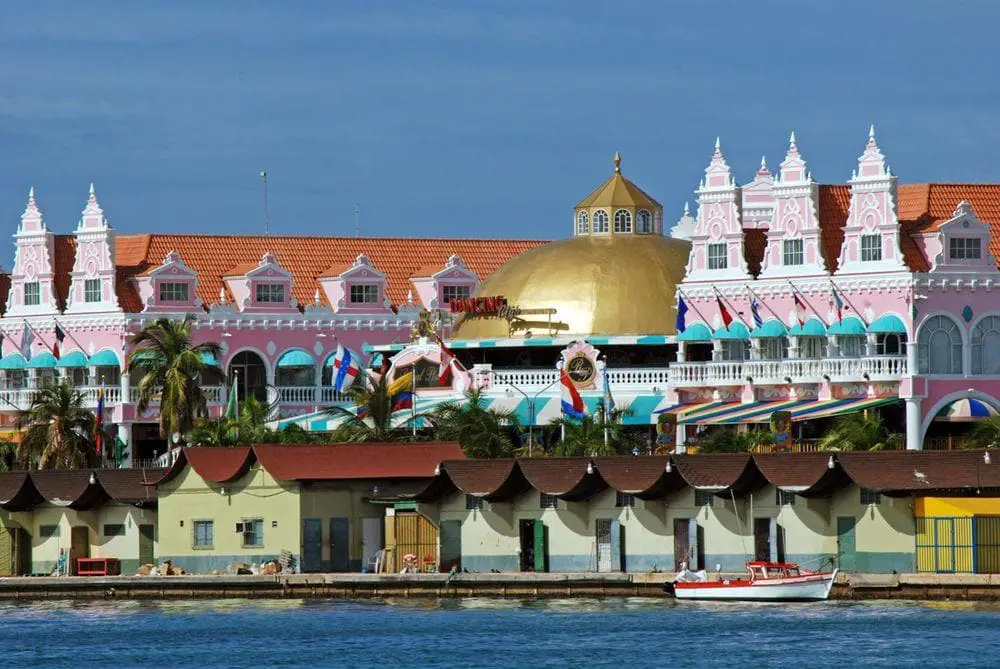Wondermondo 🢖 World 🢖 Wonders of North America 🢖 Wonders of the Caribbean 🢖 Wonders of Aruba
Territory
Wonders of Aruba

 Highlights
Highlights
Aruba is one of the constituent countries of the Kingdom of the Netherlands and is located in the Caribbean region.
On this small island are located several interesting rock formations and caves with petroglyphs and drawings created by Amerindian people.
Map with the described wonders
If you see this after your page is loaded completely, leafletJS files are missing.
 Top 10 wonders of Aruba
Top 10 wonders of Aruba
Geological wonders
Triple bridge
A group of three natural bridges on the eastern coast of Aruba.
Huliba Cave (Baranca Sunu Cave, Tunnel of Love)
200 m long cave with five entrances. Contains stalactites and stalagmites, large bat colony.
Seroe Colorado natural bridge
Fine natural bridge formed from coral rock.
“Baby bridge” near Andicuri
Smaller natural bridge at the eastern coast, next to the collapsed major natural bridge that once was important tourist attraction to Aruba.
Archaeological wonders
Ayo Rock Formations
The former sacred place of Amerindians, groups of large boulders. Contains Amerindian petroglyphs. Especially impressive are Casibari Boulders – unusual, giant rock boulders, formed from tonalite. These rock formations resemble birds and dragons and complement the natural desert-like landscape of eastern Aruba.
Fontein Cave
95 m long cave that contains Amerindian drawings and etchings as well as stalactites and stalagmites. Former sacred place of Amerindians.
Quadirikiri Cave
150 m long cave that opens in a limestone wall. Contain Amerindian petroglyphs, stalactites and stalagmites. Two large cave chambers are lighted through holes in the ceiling. Site of legends.
Canashito Cave
Cave with rock paintings. Burials of five family members from 100 BC – 100 AD. Two skulls seem to be artificially deformed.
Architecture wonders
Fort Zoutman
The oldest structure on the island. Built in 1798. Includes Willem III Tower – a lighthouse and belltower, built in 1868. Now serves as a museum of Aruba.
 Recommended books
Recommended books
Aruba History and Culture: Tourism, Art, Custom and Tradition
The Spanish discovered Aruba in or around 1499. Because of the absence of precious metals Aruba, Bonaire, and Curaçao were declared Islas Inutiles (Useless Islands); Get to know the inside out of Aruba history, starting from the first day of the discovery Population Most of Aruba’s population is ethnically mixed, including many people of American Indian ancestry, often in combination with Dutch, Spanish, and African heritage.
Fodor’s In Focus Aruba
Written by locals, Fodor’s travel guides have been offering expert advice for all tastes and budgets for 80 years.





